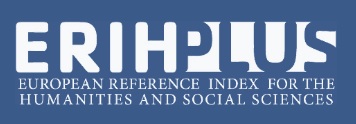ADVENTURE DESTINATION PRIORITIZATION IN INDIA: AHP AND TOPSIS APPROACH
Abstract
India's adventure destinations offer a rich tapestry of experiences for enthusiasts, drawing visitors from around the globe. This study uses multi-criteria decision-making techniques, specifically AHP (Analytic Hierarchy Process) and TOPSIS (Technique for Order of Preference by Similarity to Ideal Solution), to identify the most suitable adventure site based on various factors. Seasonality is highlighted as the most significant criterion, followed by expected hedonic value, adventure type, difficulty level, safety, budget, accessibility, duration, landscapes, and services. Among the twenty adventure sites evaluated, Rishikesh in Uttarakhand emerged as the most ideal, while Spiti in Himachal Pradesh was the least preferred. The research provides valuable insights into the relative suitability of various sites, offering a decision-making framework for tourists, destination managers, and stakeholders. This framework ensures that the selected adventure destinations align closely with the diverse preferences and priorities of tourists, aiding in the development and selection of adventure tourism products and experiences.
Keywords
References
5 exclusive experiences you can have only in the Andamans! (2024). The Times of India. Retrieved May 7, 2024, from https://timesofindia.indiatimes.com/travel/destinations/5-exclusive-experiences-you-can-have-only-in-the-andamans/articleshow/109664174.cms
Acharya, A., Mondal, B. K., Bhadra, T., Abdelrahman, K., Mishra, P. K., Tiwari, A., & Das, R. (2022). Geospatial analysis of geo-ecotourism site suitability using AHP and GIS for sustainable and resilient tourism planning in West Bengal, India. Sustainability, 14(4), 2422.
Adventure Tourism in India—Top 12 Adventure Destinations in India 2023. (2023). Retrieved May 7, 2024, from https://blog.decathlon.in/articles/adventure-tourism-in-india-an-overview
Akman, K. (2019). Çok ölçütlü karar verme yöntemlerinde AHP ve TOPSIS ile araba seçimi. Necmettin Erbakan University, Institute of Science and Technology, Master's Thesis, Konya
Allman, T. L., Mittelstaedt, R. D., Martin, B., & Goldenberg, M. (2009). Exploring the motivations of BASE jumpers: Extreme sports enthusiasts. Journal of Sport and Tourism, 14(4), 229–247.
Apter, M. J. (1982). The experience of motivation: The theory of psychological reversals. London: Academic Press.
Ayçin, E. (2019). Çok kriterli karar verme bilgisayar uygulamalı çözümler. Ankara: Nobel Akademik Yayıncılık .
Beedie, P. (2008). Adventure Tourism as a ‘New Frontier’ in Leisure, World Leisure Journal, 50(3), p. 173- 183.
Beyond, F. (2024, January 23). India, with its diverse landscapes and rich cultural tapestry, offers adventure enthusiasts a…. Medium. https://medium.com/@frontiersbeyondtours/india-with-its-diverse-landscapes-and-rich-cultural-tapestry-offers-adventure-enthusiasts-a-740184d0d96a
Bhautik, P. N. (2023). Exploring the Camping Tourism Opportunities of Pune, Maharashtra, India. ATITHYA: A Journal of Hospitality, 9(2).
Bozionelos, N., & Bozionelos, G. (1999). Playfulness: Its relationship with instrumental and expressive trait. Personality and Individual Difference, 26, 749–760.
Buckley, R. (2007). Adventure tourism products: Price, duration, size, skill, remoteness, Tourism management, 28(6), p. 1428-1433
Buckley, R. (2014). Adventure tourism as a research tool in non-tourism disciplines, Tourism Recreation Research, 39(1), p. 39-49.
Buckley, R. C. (2011). Rush as a key motivation in skilled adventure tourism. Tourism Management, 33(4), 961–970
Çelikbilek, Y., & Özdemir, M. (2020). Çok kriterli karar verme yöntemleri açıklamalı ve karşılaştırmalı sağlık bilimleri uygulamaları ile. Ankara: Nobel Akademik Yayıncılık.
Csikszentmihalyi, M. (1975). Beyond boredom and anxiety. San Francisco, CA: Jossey-Bass.
Csikszentmihalyi, M. (1985). Reflections on enjoyment. Perspectives in Biology and Medicine, 28(4), 489–497.
Csikszentmihalyi, M. (1992). Flow: The psychology of happiness. London: Rider.
Dar, H. (2014). Potentials and problems of adventure tourism: a study of Kashmir valley. Abhinav International Monthly Refereed Journal of Research in Management & Technology, 3(9), 77-84.
Delle Fave, A., Bassi, M., & Massimini, F. (2003). Quality of experience and risk perception in high-altitude rock climbing. Journal of Applied Sport Psychology, 15(1), 82–98.
Ewert, A. W. (1994). Playing the edge: Motivation and risk taking in a high altitude wilderness environment. Environment and Behaviour, 26(1), 3–24.
Ewert, A. W., Gilbertson, K., Luo, Y., & Voight, A. (2013). Beyond “because it’s there”: Motivations for pursuing adventure recreational activities. Journal of Leisure Research, 45(1), 91–111
Ewert, A., & Jamieson, L. (2003). Current status and future directions in the adventure tourism industry, Wilks, J. Moore, J. S. (Eds.). Managing tourist health and safety in the new millennium, London: Routledge, p. 87-104.
Ewert, A., Gilbertson, K., Luo, Y. & Voight A. (2013). Beyond "Because It's There"Motivations for Pursuing Adventure Recreational Activities. Journal of Leisure Research, 44(1), 99-111. DOI: 10.18666/JLR-2013-V45-I1- 2944
Giddy, J. K. & Webb, N. L. (2018). The influence of the environment on adventure tourism: from motivations to experiences, Current issues in tourism. 21(18), p. 2124-2138.
Giddy, J. K. (2018). Adventure Tourism Motivations: A push and pull factor approach, Bulletin of Geography. Socio-economic Series, 42(42), p. 47-58.
Heyns CM. 2009. Factors influencing the student travel behavior. Mini Dissertation- Hons. North-West University: Potchefstroom.
Houge Mackenzie, S., Hodge, K., & Boyes, M. (2011). Expanding the flow model in adventure activities: A reversal theory perspective. Journal of Leisure Research, 43(4), 519–544.
İpek, U. (2019). Kuruluş yeri seçiminde çok kriterli karar verme teknikleri: Analitik hiyerarşi süreci ve TOPSIS örneği. Toros University Institute of Social Sciences.
Jackson, S. A., & Csikszentmihalyi, M. (1999). Flow in sports: The keys to optimal experience and performances. Champaign, IL: Human Kinetics.
Jackson, S. A., & March, H. W. (1996). Development and validation of a scale to measure optimal experience: The flow state scale. Journal of Sport & Exercise Psychology, 18(1), 17–35.
Jain, D., Bukhari, S. S., & Gupta, S. (2023). Discovering the Contentment of Adventure Travel in Relation to Trekking Retreats in Northern India: An Empirical Investigation. Boletin de Literatura Oral-The Literary Journal, 10(1), 1606-1611.
Jones, C. D., Hollenhorst, S. J., & Perna, F. (2003). An empirical comparison of the four channel flow model and adventure experience paradigm. Leisure Sciences, 25, 17–31.
Kamble, U. P. (2019). Overview on adventure sports tourism in India.
Kerr, J. H., & Houge Mackenzie, S. (2012). Multiple motives for participating in adventure sports. Psychology of Sport and Exercise, 13(5), 649–657.
Krejčí, J., & Stoklasa, J. (2018). Aggregation in the analytic hierarchy process: Why weighted geometric mean should be used instead of weighted arithmetic mean. Expert Systems with Applications, 114, 97-106.
Kumar, G. M. K. (2017). Andaman Islands-A Perfect Tourist Destination. International Journal of Science Technology, and Management, 6(7), 67.
Kumar, K. (2023). Potential of India in becoming top tourism hub in the world. The Times of India. Retrieved May 7, 2024, from https://timesofindia.indiatimes.com/readersblog/potential-of-india-in-becoming-top-tourism-hub-in-the-world/potential-of-india-in-becoming-top-tourism-hub-in-the-world-52037/
Kumar, L., & Reddy, J. B. (2024). A Study on Adventure Tourism and Mountaineering Practice as a Business Perspective Among the Northern Region of India. In Mountain Tourism and Ecological Impacts: Himalayan Region and Beyond (pp. 1-14). IGI Global.
Laurendeau, J. (2006). “He didn’t go in doing a sky dive”: Sustaining the illusion of control over an edgework activity. Sociological Perspectives, 49(4), 583–605.
Lois, J. (2005). Gender and emotion management in the stages of edgework. In S. Lyng (Ed.), Edgework: The sociology of risk taking (pp.117–152). London: Routledge.
Lyng, S. (1990). Edgework: A social psychological analysis of voluntary risk taking. American Journal of Sociology, 95(4), 851–886
Lyng, S., & Snow, D. (1986). Vocabularies of motive and high-risk behaviour. The case of sky-diving. In E. J. Lawler (Ed.), Advances in group process, Vol. 3, (pp.157–179). Greenwich, CT: JAI.
Mangoch, S., & Jain, D. (2022). Factors Determining Tourists Motivation To Visit A Place for Adventure Tourism: A Systematic Review. Academy of Marketing Studies Journal, 26(3).
Meng,F,Uysal M.2008.Effects of gender differences on perceptions of destination attributes, motivations, and travel values: an examination of a nature-based resort destination. Journal of Sustainable Tourism. 16(4): 445–465.
Minghui, S. 2007. Travel behaviour of Chinese tourists living in the city of Beijing, China. MA diss, North-West University: Potchefstroom.
Narvekar, R. H., & Dayanand, M. S. (2020). Perceived value in adventure tourism-a study of trekkers in Himachal Pradesh with respect to satisfaction and future intentions!. Revista Turismo & Desenvolvimento (RT&D)/Journal of Tourism & Development, (34).
Noble SM, Haytko DL, Phillips J. 2009. What drives college-age Generation Y consumers? Journal of Business Research 62: 617–628.
Özbek, A. (2019). Çok kriterli karar verme yöntemleri ve excel ile problem çözümü. Ankara: Seçkin Akademik ve Mesleki Yayınlar.
Paksoy, S. (2017). Çok kriterli karar vermede güncel yaklaşımlar. Adana: Karahan Kitabevi.
Patil, A. H. (2023). NAVIGATING THE DYNAMIC LANDSCAPE OF INDIAN TOURISM: CHALLENGES AND OPPORTUNITIES. Commerce and Management Volume III, 98.
Patil, N. (2024). A Journey to India’s Farthest Corners. Retrieved May 7, 2024, from https://www.linkedin.com/pulse/journey-indias-farthest-corners-neil-patil-azgff
Patil, S. (2016). Adventure Tourism in India-An Emerging Form of Tourism. KIMI Hospitality Research Journal, 1(1), 41.
Pomfret, G. (2012). Personal emotional experiences associated with packaged mountaineering holidays. Tourism Management Perspectives, 4, 145– 154.
Saaty, T. L. (2000). Fundementals of Decision Making and Priority Theory with Analytic Hierarchy Process. Pittsburgh: RSWPublications.
Şahin, K., & Cezlan, E. Ç. (2022). Hospital selection of health tourists: A study with Ahp and Topsis Methods. OPUS Journal of Society Research, 19(46), 327-339.
Sarkar, S., Keat, T. T., & Gebrie, B. D. (2024). Prospects and Challenges of Tourism Industry in Meghalaya-Socio-Geographical Approach. Journal of Global Economy, 20(1).
Schott, C. (2007). Selling adventure tourism: a distribution channels perspective. International Journal of Tourism Research, 9(4), p. 257-274.
Seifert, T., & Hedderson, C. (2010). Intrinsic motivation and flow in skateboarding: An ethnographic study. Journal of Happiness Studies, 11(3), 277–292.
Shaikh, S. A., Memon, M., & Kim, K. S. (2021). A multi-criteria decision-making approach for ideal business location identification. Applied Sciences, 11(11), 4983.
Singh, H. (2021). Promoting Adventure Tourism and Developing an Adventure Product Program in India for the European Market.
Sung, H. H., Morrison, A. M., & O'Leary, J. T. (1996). Denition of adventure travel: Conceptual framework for empirical application from the providers' perspective. Asia Pacic Journal of Tourism Research, 1(2), 4767. https://doi.org/10.1080/10941669708721975
Swarbrooke, J., Beard, C., Leckie, S. & Pomfret, G. (2003). Adventure tourism: The new frontier, London: Routledge
Topdemir, S. (2019). Ahp-Tosis Yöntemleri ile tedarikçi seçimi: Doğalgaz sekötründe bir uygulama. Beykent University Institute of Science and Technology, Istanbul.
Upadhyaya, S., & Garg, R. (2023). Analysis of Initiatives taken by Uttarakhand Tourism for the Promotion of Experiential Tourism in Uttarakhand. RES MILITARIS, 13(3), 3915-3930.
Vukic, M., Kuzmanovic, M., & Kostic Stankovic, M. (2015). Understanding the heterogeneity of Generation Y's preferences for travelling: A conjoint analysis approach. International Journal of Tourism Research, 17(5), 482-491.
Vyas, N., Kumari, B., & Sharma, P. (2024). Adventure Tourism in Bilaspur: A Framework for Assessment and Strategic Development. International Journal of Innovative Science and Research Technology, 9(3), 168-181.
Walle, A. H. (1997). Pursuing Risk or Insight: Marketing Adventures. Annals of Tourism Research 24:265–282
Williams, P. & Soutar, G. N. (2009). Value, satisfaction and behavioral intentions in an adventure tourism context, Annals of tourism research, 36(3), p. 413-438.
Willig, C. (2008). A phenomenological investigation of the experience of taking part in ‘extreme sports’. Journal of Health Psychology, 13, 690–702.
Wu, C. H. J., & Liang, R. D. (2012). The relationship between white-water rafting experience formation and customer reaction: A flow theory perspective. Tourism Management, 32(2), 317–325

This work is licensed under a Creative Commons Attribution 3.0 License.















